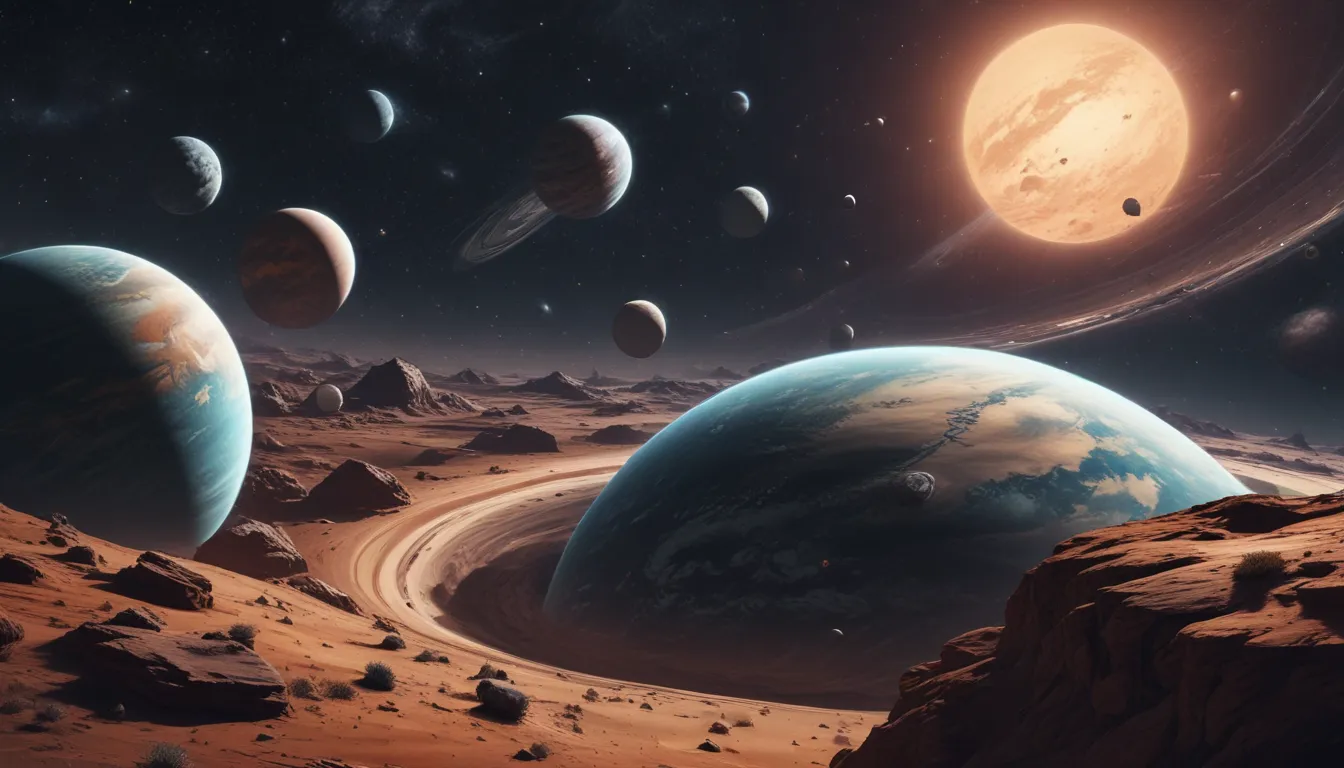The pictures we use in our articles might not show exactly what the words say. We choose these pictures to make you interested in reading more. The pictures work together with the words but don’t take their place. The words still tell you the important facts.
Are we alone in the universe, or are there other habitable planets out there waiting to be discovered? The concept of planetary habitability has captivated the minds of scientists and enthusiasts for centuries. In this article, we will take a deep dive into the intriguing world of planetary habitability, uncovering nine captivating facts that shed light on this fascinating subject. From the importance of liquid water to the influence of host stars, join us on an exhilarating journey through the possibilities of life beyond Earth.
Key Takeaways:
- Essential Factors for Habitability: Liquid water, atmosphere, magnetic fields, stable orbit, moons, and host stars play crucial roles in planetary habitability.
- Diverse Habitability: Potential habitable worlds are not limited to Earth-like planets, as moons and exoplanets within habitable zones also hold promise for supporting life.
- Technological Advances: Advancements in technology are aiding scientists in exploring habitable exoplanets beyond our solar system.
The Crucial Role of Liquid Water
Water is often considered the elixir of life, and its presence is crucial for supporting life as we know it. Planets located within the habitable zone, also known as the Goldilocks zone, have the ideal conditions for liquid water to exist on their surfaces, making them prime candidates for habitability.
The Vital Support of Atmosphere
An atmosphere is more than just a blanket of air around a planet—it plays a critical role in supporting life. Earth's nitrogen and oxygen-rich atmosphere provide a protective shield against harmful radiation and help regulate the planet's temperature, creating a conducive environment for life to thrive.
The Importance of a Protective Magnetic Field
A planet's magnetic field acts as a shield against solar wind and helps maintain its atmosphere. Earth's magnetic field, generated by its iron core, is essential for preserving life on our planet by protecting it from harmful cosmic rays and solar storms.
Orbital Stability and Its Impact on Habitability
The stability of a planet's orbit is paramount for maintaining its habitable conditions over time. Slight variations in a planet's orbit can have significant effects on its climate and habitability, highlighting the delicate balance required for a planet to support life.
The Influential Role of Moons
Moons can have a profound impact on a planet's habitability. They stabilize the planet's axial tilt, preventing extreme climate variations, and create tidal forces that influence oceanic currents and promote biodiversity. Moons, such as Europa and Enceladus, are intriguing targets for exploring potential habitable environments within our solar system.
Beyond Earth-like Planets: Expanding the Definition of Habitability
While Earth serves as our primary reference for habitability, life may exist under a variety of conditions. Scientists are investigating the potential habitability of moons and exoplanets that fall within the habitable zones of their host stars, broadening our understanding of where life could exist beyond our solar system.
The Impact of Host Stars on Planetary Habitability
The type and characteristics of a host star can significantly influence the habitability of planets orbiting it. Stars similar to our Sun are considered favorable for supporting life, as their size, temperature, and stability play a crucial role in creating a hospitable environment for potential life forms.
Disruptions and Challenges to Habitability
Extreme events, such as supervolcanic eruptions and asteroid impacts, have the potential to disrupt a planet's habitability. Mass extinctions in Earth's history serve as reminders of the vulnerability of life on our planet and highlight the need to understand and mitigate potential threats to habitable environments.
Technological Advances in the Search for Habitable Exoplanets
Advancements in telescopes and space missions have expanded our search for habitable exoplanets beyond our solar system. Scientists have discovered a myriad of exoplanets within the habitable zones of their host stars, offering new insights into the diversity of potential habitable environments in the universe.
Conclusion
The quest for planetary habitability continues to inspire curiosity and drive scientific exploration. As we uncover more about the conditions necessary for life to flourish beyond Earth, the search for habitable worlds outside our solar system remains a tantalizing endeavor. With each new discovery and technological advancement, we move closer to answering the age-old question of whether we are truly alone in the universe.
FAQs
-
What is planetary habitability?
Planetary habitability refers to the conditions that make a planet suitable for supporting life as we know it, including the presence of water, a stable atmosphere, and the right combination of elements. -
What does the habitable zone mean?
The habitable zone is the region around a star where conditions are conducive to liquid water, a vital factor in assessing a planet's potential for hosting life. -
Are there planets in the habitable zone?
Yes, several exoplanets have been discovered within the habitable zones of their host stars, offering intriguing possibilities for potential habitable environments. -
Can life exist on other planets?
While definitive evidence of extraterrestrial life is yet to be found, the discovery of extremophiles on Earth suggests that life may exist in extreme environments on other planets or moons. -
How do scientists determine if a planet is habitable?
Scientists study a planet's distance from its star, composition, and the presence of essential molecules to assess its habitability. The presence of liquid water is a crucial indicator. -
Can habitable planets exist outside our galaxy?
While current knowledge is limited to our galaxy, the Milky Way, the vastness of the universe suggests that habitable planets could exist throughout the cosmos. -
Can habitability be engineered?
There is ongoing research on engineering habitable environments on other planets through concepts like terraforming, but the practicality and ethical implications are still under debate. -
Why is the search for habitable planets important?
The search for habitable planets expands our understanding of life in the universe, drives scientific advancements, and may lead to the discovery of extraterrestrial life, reshaping our perceptions of life's existence in the cosmos.
Dive deeper into the captivating world of planetary habitability and join us in unraveling the mysteries of potential habitable environments beyond Earth. As we continue to explore the cosmos and push the boundaries of our understanding, the quest for habitable worlds will remain a captivating and ongoing adventure.






